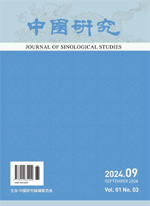Prajñāpāramitā, Upāya and Parināmanā - Centered on the Aṣṭasāhasrikā Prajñāpāramitā Sūtra
- ACADEMIC FRONTIERS PUBLISHING GROUP(AFP)
- Journal of Sinological Studies(JSS)
- Vol.2 No.5
-
2025.0585 - 100 (16 pages)
-
DOI : 10.62989/jss.2025.2.5.85
- 0

The Aṣṭasāhasrikā Prajñāpāramitā Sūtra is a pivotal text in Buddhist doctrines and a key scripture for understanding the Prajñāpāramitā. This study focus on “Prajñāpāramitā”, “Upāya” and “Parināmanā”——the three core concepts from the text to examine the interrelationships, thereby clarifying the characteristics of early Mahāyāna thought in the Aṣṭasāhasrikā Prajñāpāramitā Sūtra. Specifically, the meaning of “Prajñāpāramitā” is most emphasize in related scriptures. It is the realization of the non-attachment to all dharmas by practitioners, and serves as the basis of the six pāramitās for bodhisattvas, the mother of Upāya, and the shared dharma for practitioners of Triyāna. “Upāya”, on the other hand, is a particularly emphasized virtue of bodhisattvas in early Mahāyāna scriptures and constitutes the fundamental safeguard for non-retrogression when leading to Buddhahood. Therefore, “Upāya” and “Prajñāpāramitā” are interdependent. “Parināmanā” is the application of “Prajñāpāramitā” and “Upāya.” Only when “Parināmanā” is carried out on the basis of these two can it be considered correct or supreme one. Collectively, “Prajñāpāramitā”, “Upāya” and “Parināmanā” elucidate the essence of the emptiness, demonstrating Buddhism’s concern for sentient beings theoretically and practically.
1 Introduction
2 Editions and Textual Notes
3 Prajñāpāramitā: The Realization of Non-Attachment to All Dharmas
4 Upāya as Protection: The Guarantee of Non-Retrogression
5 Bodhisattva Parināmanā: The Direct Application of Prajñāpāramitā and Upāya
6 Conclusion
References
(0)
(0)